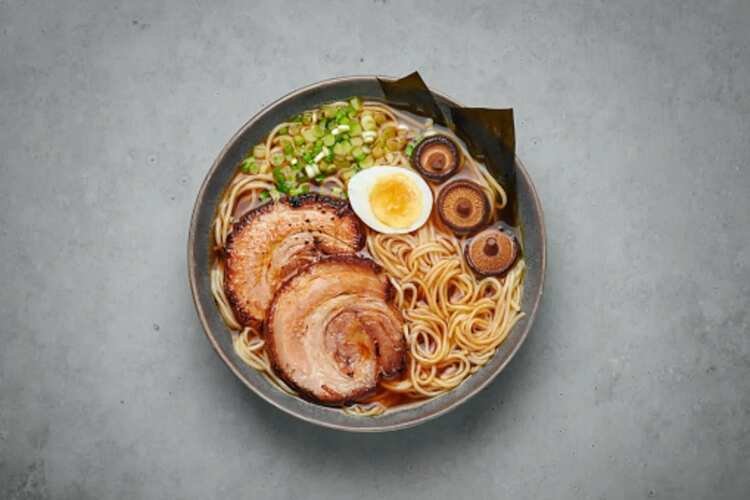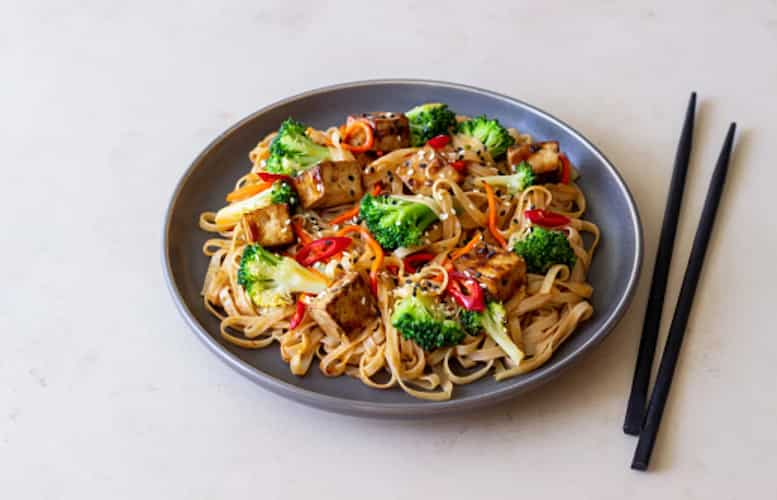Noodles are a mainstay of Japanese food and culture and may be found in every corner of the country. There are so many distinct types of noodles being served in everything - from vending machines to Michelin-starred restaurants and from the bright lights of Tokyo to the tranquil quarters of Kyoto. Japanese noodle dishes are not only delicious but also quite adaptable. You can slurp hot soups, eat chilly summer bowls and savour dipping sauces. Noodles are iconic in many Asian cultures, and there are a plethora of variations in Japan. Here, we take a closer look at two of the most popular Japanese noodle dishes: Ramen and Udon.
Ramen
This dish is thought to have originated with Chinese wheat flour noodles. There are a few ideas about the earliest record of Chinese noodles in Japan if we go back far enough in history. Some say that it was discovered in 1697 when Tokugawa Mitsukuni, a powerful Daimyo of Mito, was introduced to noodles by a scholar from the Ming Dynasty. But historians have stated that they feel this is nothing more than a myth. Noodles were most likely brought by immigrants later in the 19th century when ramen became popular in Japanese cuisine.
The first dedicated ramen store opened in 1910, and as limitations on flour and food seller laws were eased during the postwar boom, the popularity of ramen rose. This also happened to coincide with the return of Japanese soldiers from China. What had been a simple dish of sliced noodles and salt and bone broth came to be moulded into several regional versions, and ramen has become synonymous with Japanese culture. In Tokyo alone, there are around 5,000 ramen shops.
When Momofuku Ando of Nissin Foods produced instant ramen in 1958, it was heralded as the greatest Japanese invention of the 20th century. Instant noodles with a ‘simply add water’ philosophy can be found in grocery stores all over the world.
Ramen noodles can be curly or straight, thick or thin, long or short, and come in a variety of shapes and sizes. But one thing that all ramen noodles have in common is that they're cooked with kansui, an alkaline solution that gives them their golden chewy texture. When you combine kansui and wheat, you get a tinge of ammonia, which gives ramen noodles their characteristic flavour.
Ramen broth is often made out of boiling water, pork bones, chicken bones, beef bones, kelp, bonito and miso, in addition to the noodles. Depending on the tare and how salty the flavour is, it may also be made with soy sauce. Tare is an important part of ramen because it’s one of the main ways to season it. It’s put in the bottom of the bowl before the soup goes in, so it settles at the bottom and seeps into the soup. Tare can be shoyu, shio, or miso and can be a paste or a thick sauce. The smooth chewy noodles are drowned in a fragrant broth and topped with everything from crisp bamboo shoots to creamy cooked eggs, earthy onions and tender chashu. Ramen is rich in umami aromas.

Udon
The thickest Japanese noodle, udon, is produced from wheat flour. Although the origins of this noodle are unknown, it is thought to have taken on its long strip shape during the Edo era. A Japanese Buddhist monk is thought to have brought it over from China during the Tang dynasty. Another account claims it originated during the Song era when a Japanese monk brought the milling skills he had learned in China to his homeland.
Milled flour, water, and salt are used to make udon noodles. They have a lighter hue and a milder flavour than ramen noodles. One of the most important aspects of udon noodles is that, unlike ramen, they are not prepared with eggs, making them an excellent vegan noodle option. Because of the gluten structure, udon noodles are also more springy. Udon noodles are frequently chilled in cold water before being served to ensure that they retain their bounce and do not become sticky. Depending on personal inclination or the season, udon noodles can be served hot and steaming in a noodle soup or chilled with dipping sauce.
The broth is also distinct from ramen. Udon broth comes in two flavours, each from a distinct region of Japan. Kanto udon is from the east, while Kansai udon is from the west. Kanto udon soup is saltier and darker than Kansai udon soup, which is milder and often cooked with dashi. Aburaage, tempura, green onions, eggs and kamaboko (sliced beef) are common toppings for udon dishes.
While both meals are flavourful, Udon may be the healthier of the two noodle dishes because it uses cleaner, simpler toppings and has less sodium because it does not contain kansui (the alkaline solution that gives ramen its unique flavour). However, because homemade ramen is healthier than instant store-bought ramen, which may be higher in sodium and calories, it all relies on how the noodles are cooked. Nona Lim ramen broth is also quite healthy because it is prepared from bone broth, or you can go for the hot miso version, which is suitable for vegetarians.




